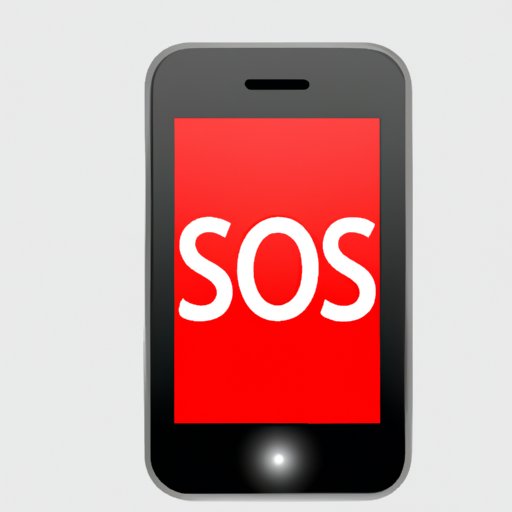
I. Introduction
Most iPhone users are familiar with the SOS feature, which can be a lifesaver in emergencies. However, there are times when the feature is not necessary or desirable. In this article, we will explore how to turn off SOS settings on iPhone. Readers can expect to learn when and how to disable the SOS feature, troubleshoot common problems, and explore alternative options.
II. What is SOS on iPhone?
SOS is an emergency feature on iPhones that lets users contact emergency services in urgent situations. The feature can be activated by pressing the power button five times or, on newer models, the side button and volume button at the same time.
Once activated, the iPhone automatically dials the local emergency services and sends a message to the user’s emergency contacts with the phone’s current location. The device also displays the Medical ID of the user, which first responders can access to learn about any medical conditions, allergies, or medications that the user may be taking.
III. Why Turn off SOS on iPhone?
While the SOS feature can be a lifesaver in emergencies, there may be situations when users may not want the feature to be active. For example, users may accidentally trigger the SOS feature while performing tasks like putting the iPhone in their pocket or bag. This can result in unnecessary calls to emergency services, which can waste time and resources.
Additionally, users may have security concerns about the feature. For instance, if someone else has access to the iPhone, they could accidentally or intentionally activate the SOS feature without the owner’s knowledge or consent.
IV. Step-by-Step Guide to Turning Off SOS on iPhone
Here’s how to turn off SOS on iPhone in a few straightforward steps:
- Open the Settings app on the iPhone.
- Tap the “Emergency SOS” option.
- Turn the “Call with Side Button” toggle switch to off.
- Turn the “Auto Call” toggle switch to off.
These steps will disable both the “Call with Side Button” and “Auto Call” features. This means that users will no longer be able to activate the SOS feature by pressing the side button or automatically after pressing the power button five times.
V. Troubleshooting Common Problems with Turning Off SOS on iPhone
If users encounter issues while trying to turn off SOS on their iPhone, they can try the following solutions:
- If the “Call with Side Button” toggle switch is grayed out, it may be because the iPhone’s regional settings do not support the feature. In this case, users can try changing the iPhone’s region settings to a region that supports the feature.
- If the “Auto Call” toggle switch is grayed out, it may be because the iPhone does not have a SIM card or cellular data plan. In this case, users can turn off the “WiFi Calling” feature to activate the “Auto Call” feature.
- If users are still having issues with the SOS feature, they can try resetting the iPhone’s settings or contacting Apple support.
VI. Alternative Options to SOS on iPhone
Several alternative emergency apps and features can be used on iPhones, in addition to the built-in SOS feature. Here are few options:
- Medical ID: This feature lets users create a medical ID containing information about their medical history, conditions, allergies, and medications. First responders can access this information even if the iPhone is locked.
- Third-Party Emergency Apps: There are several third-party emergency apps available for download from the App Store, which offer features like automatic location tracking, live audio or video streaming, and alerts to friends and family members.
- Silent Beacon: This standalone device pairs with the iPhone and sends SOS alerts to emergency contacts with the user’s location.
VII. Real-Life Examples of When to Turn off SOS on iPhone
Here are a few examples of scenarios where turning off SOS on iPhone may be necessary:
- If someone accidentally triggers the SOS feature while the iPhone is in their pocket or bag and only realizes that they dialed emergency services after the call has been answered.
- If the iPhone belongs to someone who has a history of mental illness or substance abuse and is prone to making unnecessary or false reports to emergency services.
- If the iPhone belongs to a child or elderly person who may accidentally trigger the SOS feature.
VIII. Conclusion
The SOS feature on iPhones is an essential tool that can help save lives in emergencies. However, there are times when turning off the feature may be appropriate or necessary. By following the step-by-step guide and exploring alternative options highlighted in this article, users can ensure that they have control over their iPhone’s emergency features and use them effectively when needed.




